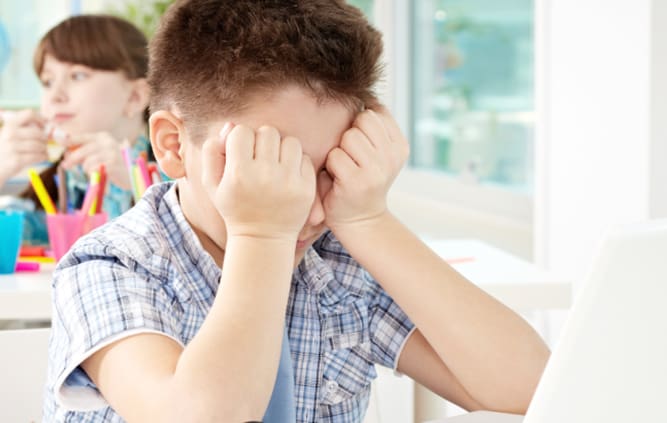Has Your Child Developed Nearsightedness from overuse / increased digital device use?

Untreated nearsightedness or MYOPIA can cause a child to be at greater risk for developing serious eye diseases like glaucoma, retinal tears, and premature cataracts. In 1970, only 25% of Americans were myopic or near. sighted; the world population is on track to be 50% myopic by 2050.
Two factors play a role:
- Genetics – children with 1 or 2 myopic parents are more likely to be myopic.
- Lifestyle / Environment: children who spend more time reading or using digital devices instead of spending time outdoors have a greater chance of being myopic.
Give your child the benefit of optimal vision for learning. DO. IT. NOW. Schedule an Eye Exam today
Do not rely on a vision screening at the Pediatrician’s Office
- Blurry vision when looking at distant objects.
- The need to squint or partially close the eyelids to see clearly.
- Headaches caused by eyestrain.
- Difficulty seeing while traveling in a vehicle, especially at night (night myopia)

Signs Your Child May Be Nearsighted
Children with myopia have difficulty seeing things at a distance, which may be demonstrated by sitting too close to the television, squinting, or difficulty in school because they can’t see the board. They might also complain of “tired eyes” or headaches when trying to see something far away. Many times, kids don’t know that they cannot see things at a distance, in other words, they are too young to articulate or realize that they’re not seeing optimally.
These signs shouldn’t be passed off as just childhood quirks. Too often, parents don’t realize the importance of early vision care, and wait far too long to have their child’s vision checked.
Generally, baby’s first full eye exam should be at six months which is at no cost in our practice bc we participate in the National InfantSEE program, then a follow up at age three, and then most importantly, before entering first grade.
Prevention Could Be Surprisingly Simple
Recent studies suggest a straightforward reason for skyrocketing rates of myopia in children: they aren’t spending enough time outside! Before modern times, when children spent most of their time out under the sun, it’s believed that the bright, natural light helped developing eyes focus correctly.

Dim, artificial indoor lighting doesn’t seem to provide the same benefit. This difference may be causing the eyeballs of children who spend too much time indoors to grow oblong, unable to focus on distant objects. So, the next time your child is looking for something to do, suggest something outdoors! Just a couple hours of sun a day could make all the difference!
Myopia Doesn’t Have to Limit Your Child
Correcting myopia in children requires close monitoring because their eyes are changing so rapidly, and often don’t stabilize until their 20s! However, even during all this change, your child can enjoy full, clear vision. Early action is key to slowing the myopia progression and its long term health complications. Myopia is nearsightedness can be caused by overuse of digital devices.
Whether the best choice is glasses, contacts, or other treatment, we understand that the optimal vision correction solution is one that’s tailored to each individual patient. Also, our eye doctors will make sure you and your child know everything you need to effectively use and maintain what we prescribe.
Myopia Management with MiSight® 1 Day Contact Lenses!
KIDS SHOULD GROW STRONGER. THEIR MYOPIA SHOULDN’T. STOP MYOPIA. SCHEDULE YOUR CHILD’S EYE EXAM TODAY
GIVE YOUR CHILD THE BENEFIT OF OPTIMAL VISION FOR LEARNING EVERY.SINGLE. DAY. IT. IS. THAT. SIMPLE.







